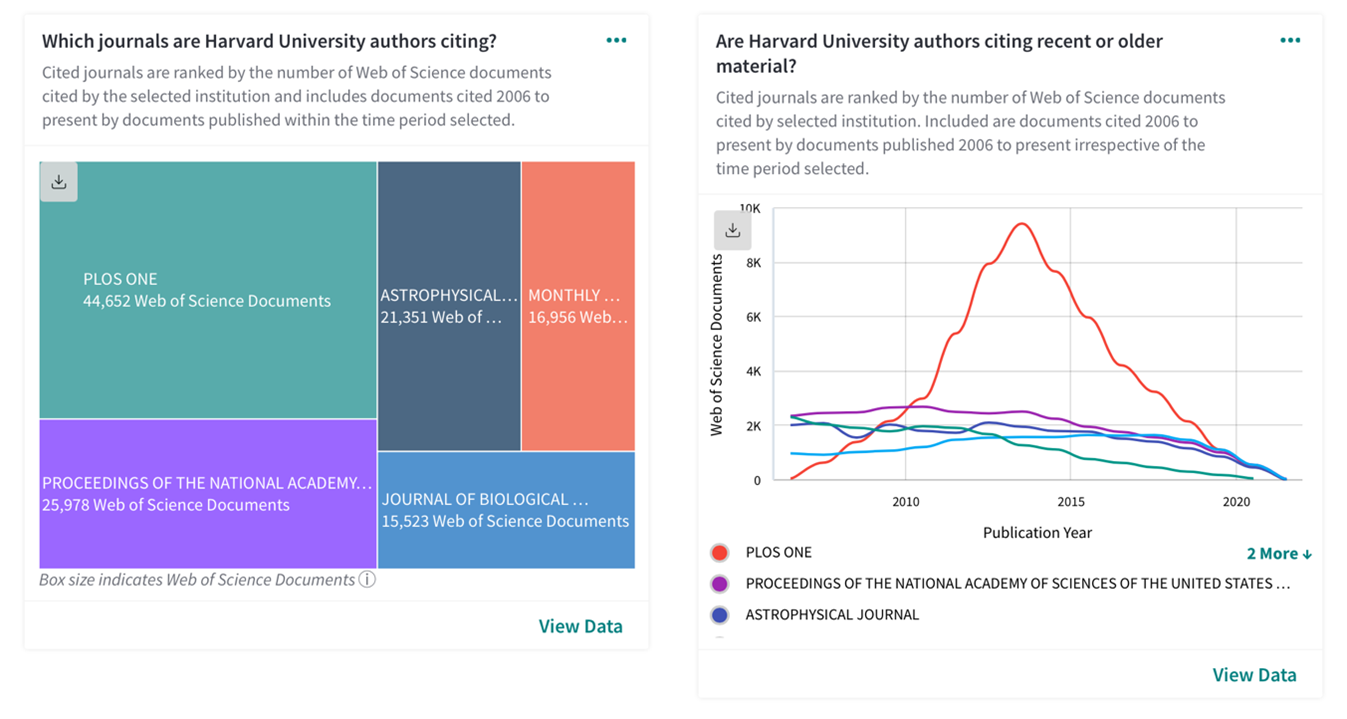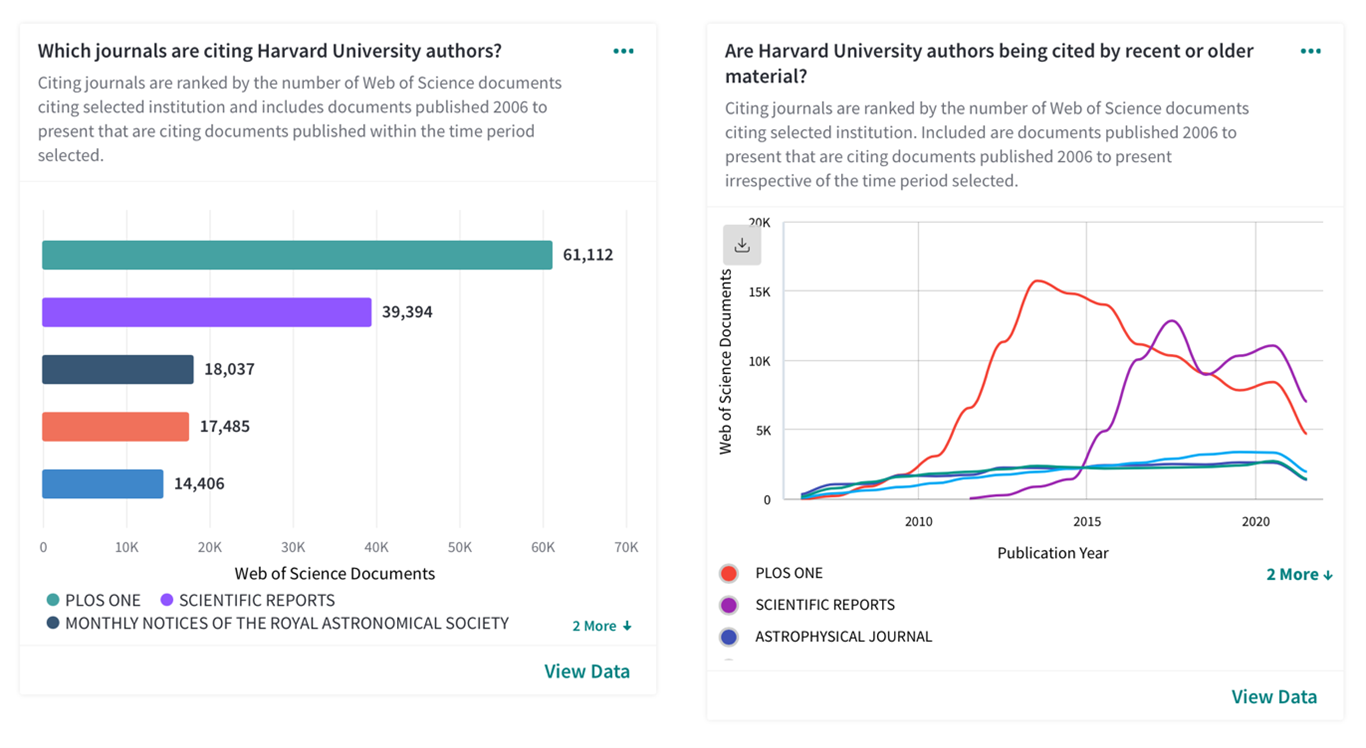Citation analysis makes collection management decisions easy. Learn what this rich, data-driven method involves, and which tools can better inform your library collecting activities.
Library collections are fundamental to the integrity of education and research at an institution. They provide high-quality material that students and faculty need to operate at an excellent standard. Despite this, university libraries are vulnerable to significant budget cuts, and have become adept at doing more with less for decades.
With the global pandemic placing even more pressure than usual on budgets, many libraries are bracing for tough times.
If you find yourself having to make hard choices about your library collection, citation analysis is a powerful approach. It helps you identify the critical journals that move your institution forward and cannot be sacrificed, even if cutbacks are unavoidable.
Keep reading to learn what citation analysis involves and how it can help you inform your collection practices. We’ll also share key features in the Web of Science™ and InCites™ that are central to this data-driven method.
Why use citation analysis for collection management
Reassessing library collections and subscription packages is not an easy task. It’s made harder if you have incomplete (or no) data to help measure the value of particular journals to your community.
Citation analysis taps into existing data like cited reference lists to identify trends in authors’ publication habits. It’s been used by librarians from as early as the 1920s, helping to provide a clear picture of the journals that scholars rely on for education and research.
Using citation analysis, you can identify which journals:
- Your faculty publish in most frequently
- Your faculty cite most often
- Cite your authors
Citation analysis delivers incredible value to collection management decisions. It is not vulnerable to the new and various ways researchers access, store and share scholarly papers today, nor is it all about the Journal Impact Factor™. Citation analysis does, of course, have its limitations. Authors do not always cite every paper used in their research, and for various reasons may cite those of marginal relevance. Research also shows that authors may be more likely to cite material their library provides access to.
Despite this, many studies note the benefits of citation analysis for collection management, and librarians describe the technique as unobtrusive and concrete. That’s because it’s neatly packaged data that helps you spot the critical information you need, driving honest discussions and fast decisions.
How the Web of Science can help
The Web of Science is one of the world’s most trusted, publisher-neutral citation databases. It includes records from 1900 to the present, is global in scope and is an indispensable resource for librarians’ application of citation analysis.
It can seem daunting, if not impossible, to understand where authors across your institution are publishing, particularly if you work at a large, research-intensive organization. However, thanks to its authority control over institutional names, the Web of Science is a good starting point. That’s because the Web of Science Affiliation field makes it quick and easy to find your institution’s papers with one simple search.
Get a summary of where your authors are publishing
- Go to the Web of Science Search Page.
- Search for your institution using the “Affiliation” option.
- Refine your results by date in the “Publication Years” filter to limit your dataset to the last ten years, for example, or select one or more years to view changes over time.
- Click the “Analyze Results” button.
- Select “Publication Titles.”

These steps provide a list of the journals your faculty rely on most to advance their careers, and thus play an essential role in advancing your institution’s mission.
Learn more about the Web of Science or try it out today.
InCites: the collection management tool you need
InCites offers world-class citation data and metrics. It is a research analytics tool that enables you to go beyond the publications that your faculty rely on to advance their careers. Instead, it will lead you to the foundational literature scholars at your institution need to conduct quality work.
The InCites Organization Report includes a Journal Utilization tool to enable you to confirm the strength of your library collection and identify the priority journals going forward. It does this by aggregating the bibliographic data linked to the faculty at your institution.
Using the InCites Organization Report and its Journal Utilization tool, you can:
- Discover which journals your authors cite the most
- Identify which journals cite your authors
- Obtain a year-by-year breakdown of the journals your authors publish in
- Drill into any graph or metric for a deeper view
- Limit and analyze your results by research area
You can also drill into and compare information across the various graphs displayed using Incites Journal Utilization. For example, you can discover whether your staff publish one set of journals, yet generally cite another set of journals. You can then use this citation data to inform your collection management decisions.
Which journals do your authors cite the most?
Visualizations in your Journal Utilization report display information about which journals your authors cite the most. For example, the tree map below shows the five journals most frequently cited by authors at Harvard University in the last 10 years. You can also view trends to see whether your authors are citing recent or older material.
This information is critical, as it shows which publications your institution rely on most to support the new ideas and discoveries that drive your organization forward.

Which journals are citing your authors the most?
Using the Journal Utilization tool, you can also see which journals cite your authors most often. This gives you an idea of which journals are influenced by the authors at your institution, and are building upon your institution’s work.

The InCites Journal Utilization tool provides insight into real scholarly publishing behavior. It is the data you need to inform additions and removals from your library collection, and make better use of funds. By identifying the journals truly essential to teaching and research at your institution, the InCites Organization Report and its Journal Utilization tool will help you sustain a quality library collection despite budget cuts, and preserve key resources for future generations.
Publisher report
InCites also includes a ready-to-use publisher report to enable you to better understand a selected publisher’s output, its subject area coverage and its impact, and contribution to open access. The included Organization Publication Profile allows you to view your own contribution to the publisher’s output in both open access and share of total (coming later in 2021). This can help define decisions around open access and transformative agreements, and help you understand the value of a collection to your organization.

Learn more about InCites or try it out today.
A quick note about citation analysis and research fields
Keep in mind that different academic fields have different publication frequencies and patterns of citation activity. Due to these disciplinary differences, we recommend analyzing your institution’s journals by discipline, as opposed to looking at the data for everything all at once.
This is possible to do in all of the above examples. In the Web of Science, you can refine your Affiliation search by “Subject Category” before using Analyze Results. When using InCites LJUR, simply click on any tile you wish to drill into and untick the “Hide unapplied” box. You will then see the option to analyze by research area.
Try citation analysis for collection management today
COVID-19 presents significant challenges to higher education institutions and society at large. Citation analysis helps you identify the content that’s essential to your institution’s research enterprise. In turn, you can help to sustain your organization’s research and educational programs through uncertain times.
Start using the Web of Science or InCites Journal Utilization tool today, or contact us to learn more.






